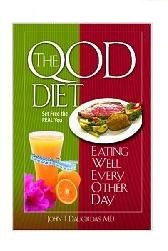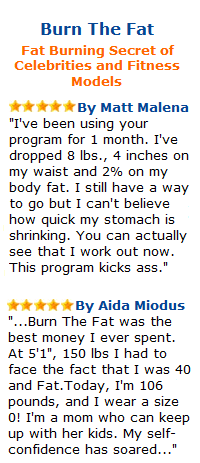Every Other Day Diet – Jump Start Metabolism
We thought hard about whether to include the Every Other Day Diet, but then we thought that some people may find it suitable. It is a bit extreme, but give this diet a read and do consider amongst all the other diets available.
This diet was put together by Dr John T Daugirdes, clinical professor of Medicine at the University of Illinois in Chicago back in 2006. He specialises in kidneys and it was this knowledge that drove him to put this diet together. It’s an interesting angle as we’ve seen other diets assembled by cardiologists given the high incidence of heart disease.
Every Other Day in Latin is Quaque Altera Die or QOD as the diet is known. It is based on the same principals as the Alternate day diet, Intermittent fasting and the Up Day Down Day Diet. It should be considered a partial fast or even an alternate day fasting. To lose weight fasting every other day is a very popular method to jump start your metabolism.

What is the theory behind the QOD diet?
Our kidneys are responsible for controlling the amount of salt in our body. Now we all know that too much salt is not good for us, and we also know that most of us eat too much salt. Our bodies flush out the excess salt via our urine. Now when we diet, Dr Daugirdes believes we feel tired very quickly as our kidneys do not get enough minerals due to a lack of calories.
Those who have followed very low calories diets know that it is difficult to adapt to the new low calorie levels and the feeling of constant hunger; then when you finally manage it - you stopped losing weight! It happens because your body switches to starvation mode thinking there is not enough food, your metabolism slows down releasing energy slowly. So his diet secret is to ensure you get enough of the right minerals so you no longer feel tired.
We are not fans of high protein diets, and the Every Other Day Diet does provide a balance of protein, good carbs and good fats
How does the diet differ then on each alternate day?
On the restricted calorie day, you are allowed to eat up to just 400 calories – yes for the entire day. The calorie counting really needs to be exact. 50% of those calories come from juices which need to be high in both potassium and sodium. Both vegetable and tomato juice are suggested. The remaining 50% of the calories are spread across several small meals eaten throughout the day, varying from 25 up to 50 calories each.
Additionally, so you maintain your muscles in good order, you’re allowed 30g or a little over 1oz of protein powder that has a high biological value (the higher the value, the more protein that your body will take in).
For the following day, i.e. the day that you are not severely calorie restricted, you can eat what you like, within reason of course. The theory is that because of the severe calorie reduction every other day, on the day when you are not restricted, you will actually eat less than you would have before you started the diet.
The Every Other Day Diet is not for you if:
- You need to lose 25lbs or more.
- You have a serious health problems.
- It is not for children and people over 60.
- You have or had anorexia or binge eating syndrome.
- You had a heart attack or are at increased risk for a heart attack.
- You are diabetic.
- You need to restrict or monitor your sodium or potassium intake for any reasons.
- You have high blood pressure, heart or kidney disease and specially those taking water pills.
- You have low blood pressure, dizziness, or history of fainting, stroke or near stroke.
Author: Lana Soko
Want to Learn More?
Like This Page?
|
Share This Page:
|



